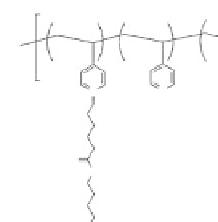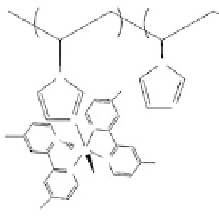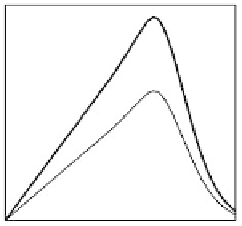Environmental Engineering Reference
In-Depth Information
monitoring tissue inflammation, implants that replace and enhance sight and hearing,
pacemakers and defibrillators, and muscle actuation systems to assist paralysis victims.
Enzyme fuel cells may be applicable in any of these applications, but significant
challenges must be overcome in developing reliable devices.
A major challenge in providing electrical power for implantable devices is the
isolation of toxic or bio-incompatible materials. As the size of the device decreases
to a centimeter or millimeter scale, the parts responsible for isolation, such as canisters
and seals, begin to determine the size of the device. An alternative is to design an elec-
trochemical system that is compatible with the physiological environment and can
take advantage of chemical species available in that environment, specifically the
Figure 17.17 Schematic representation of a single-compartment glucose/O
2
enzyme fuel cell
built from carbon fiber electrodes modified with Os
III/II
-containing polymers that incorporate
glucose oxidase at the anode and bilirubin oxidase at the cathode. The inset shows power density
versus cell potential curves for this fuel cell operating in a quiescent solution in air at pH 7.2,
0.14 M NaCl, 20 mM phosphate, and 15 mM glucose. Parts of this figure are reprinted with per-
mission from Mano et al. [2003]. Copyright (2003) American Chemical Society.

























































































































Search WWH ::

Custom Search